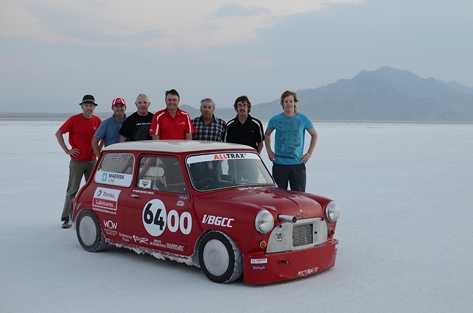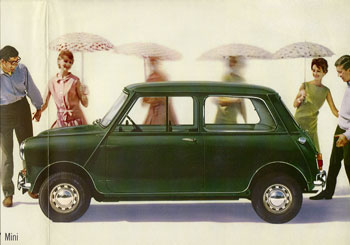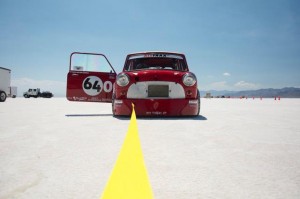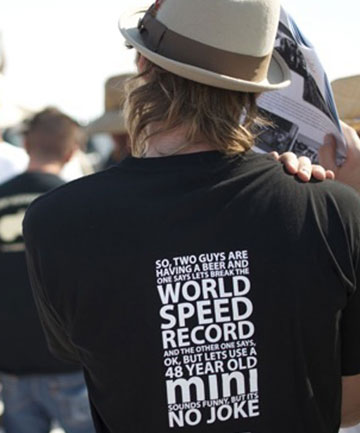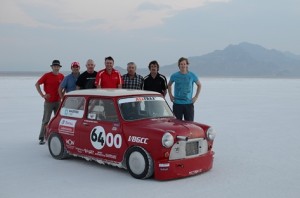**This is a guest post by author: Rob James***
A Mini With The Largest Of Ambitions To Conquer America?
Project 64 represents an unusual effort to take the classic Mini, and make a name for it as a
speed legend on the American circuit. The project was developed by a team of New Zealand car
enthusiasts, who include Garry Grant, Guy Griffith, Garry Grand and Bryan Hartley, who set out
to break the production car land speed record for vehicles under 1000cc, and chose a 1964 Mini
Cooper S to do so. In the past few days the team have achieved success, breaking and verifying
the world record at the salt flats of Bonneville, Utah.
The modified car has already beaten the previous record of 210kmh, or about 130 mph, with
land speed tests currently averaging between 142mph and 150mph, in doing so beating out Saab
Sonnets and Honda 600s’s for the top spot. The fact that the Project 64 team have done so with
a 48 year old car is a testament to the iconic design and performance of the Mini Cooper S. With
more times to come through from the 16th to the 16th of August, it’s worth looking at how the
team have progressed from the initial idea to the orientation and qualifying runs at Bonneville.
Project 64
The official breaking of the land speed record in August 2012 completes two years of hard work
for Project 64. The car was put together in the city of Nelson, New Zealand by the team, and
eventually raised $100,000 from local sponsors like the World of Wearable Art, the Classic Car
Museum, and Talley’s. A driver was picked in Nelson Hartley, brother of the F1 Mercedes driver
Brendon.
In terms of modifying the 1964 Mini Cooper S for the speed trial, while still keeping it under
1000c, the team focused on installing a supercharged overhead cam engine, while retaining
a standard engine block. The turbocharged engine has been able to generate 300bhp, while
multiple parts of the car have been made more aerodynamic, and optimised to get the most out of
the Mini’s lightweight frame.
The car was shipped over from New Zealand to Los Angeles, where it was then taken to
Bonneville and the Salt Flats. Some last minute changes were made to ensure that the car would
run as fast as possible within the speed trial rules. The team passed through Rookie Orientation
and initial trials, with the idea being that a run is made, the car is impounded, and then further
runs are officially verified. A qualification run of around 228.6 kmh, or about 146mph, was
enough to show that Project 64 could beat the existing record. The last few tests are still ongoing
as of August 17th, but the original aim of the team appears to have been achieved.
Mini Brand
Project 64’s success story is one that should showcase the enduring power of the Mini Cooper
brand to the United States and the world. By conquering the speed trial in its category, Project
64 have added another chapter to the Cooper S’s long list of achievements, from its initial fame
in the 1960s, to its revival in the 2000s. Much of the car’s success in its adapted form in the
speed trials can be put down its highly efficient weight to speed ratio, and the quality of the
turbocharged engine used.
——-
Rob James is a Mini and BMW enthusiast. In his spare time he likes to blog about the latest
updates in the automobile world, rallies and general car maintenance.

